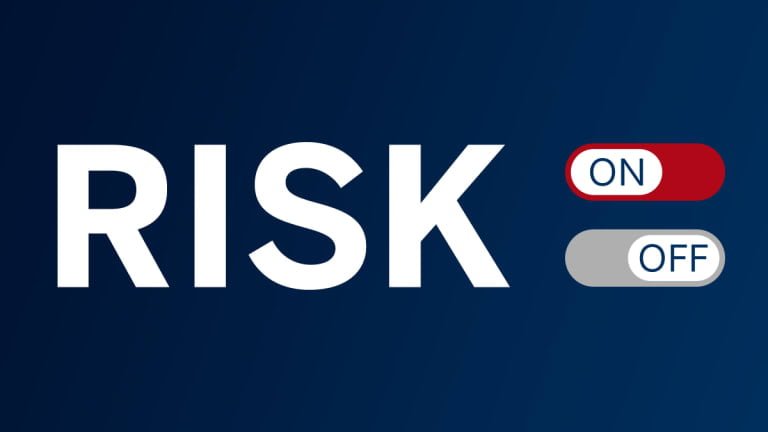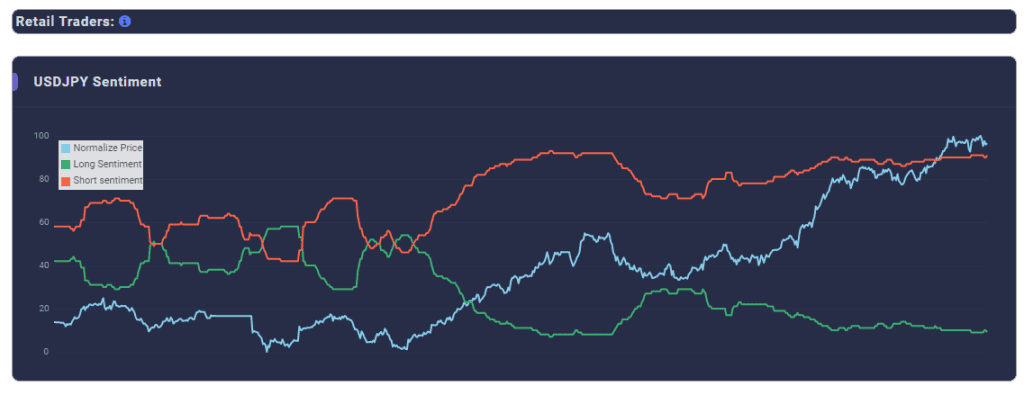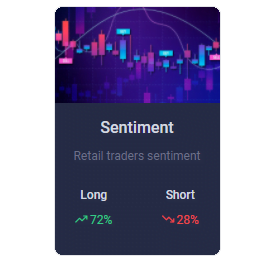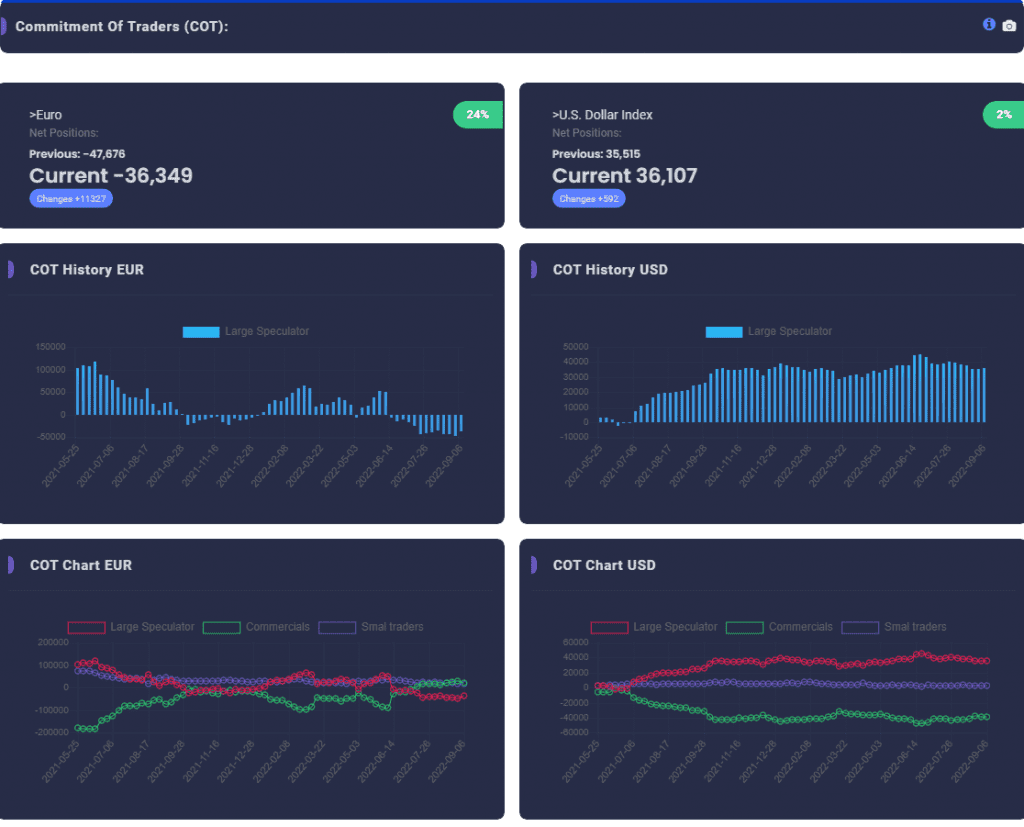How to measure the sentiment of traders in the forex market?
Fundamental analysis
Many forex traders, in addition to measuring the level of supply and demand using different methods of technical analysis, also use fundamental analysis. Fundamental analysis is a set of analytical methods that study the economic index and financial data of countries as a driver of the price of currency pairs in Forex.
Market sentiment
Forex market sentiment actually refers to the depth of the inner feelings of market traders and is a completely psychological and emotional measure.
It’s one of the main drivers of money flows in the forex market and pro traders check it every day in their fundamental analysis. in this article, we show you how to find the market sentiment with analyze the market or using some indicators.
Just as the increase in the interest rates of the central bank or the Gross domestic product of a country or the inflation rate or employment rate of a government could affect a country’s currency, sentiment could be equally effective in changing the price of currencies.
Why Economic data and financial indicator is important?
Traders use Fundamental analysis, economic data, country’s bond yields, Political points, wars, global crises effects, and geopolitical to make decisions about the long, mid, or short-term bias of their trading assets.
Generally, when economic data and geopolitical events are considered positive, it creates a positive sentiment and leads buyers to purchase the relevant asset.
On the other hand, in case of weak publishing of economic data, which indicates the slowness of a country’s economy, the opinion of investors towards that country’s currency becomes negative and they try to sell it.
For example, if traders have lower inflation expectations for a country, then they expect the government of that country to adopt a more dovish policy to increase inflation and grow the economy, which makes a negative sentiment for traders. Other examples of negative sentiment, we can mention the increase in the number of infected with Corona in a country. for example, China usually implements extensive quarantines with the increase in the number of people infected with Corona, and this will reduce the economic growth of that country, and as a result, traders’ sentiment tends to be negative for China. And because of the big economic relationship between Australia and New Zealand with China other currencies like the New Zealand dollar and the Australian dollar sentiment shifted negatively too.
Type of sentiments:

Sentiment in the forex market can be analyzed in two different ways.
In the first type, sentiment is divided into positive sentiment and negative sentiment. In this case, in the positive sentiment of the asset, it acquires upward tendencies, and in the negative sentiment of the asset, it has negative tendencies. In fact, positive and negative sentiment is the feeling and mood of the traders to buy and sell an asset.
In the second type, the sentiment is divided into three modes: mixed, Risk-on, and Risk-off sentiment.
Risk-on: In the risk mode, Sentiment refers to a state of the market – traders tend to take more risks, in fact, they tend to take more risks and buy risky assets in order to get more returns from the market. Traders sell their Bond yields, Safe haven pairs (JPY, CHF), and sometimes gold to buy risky assets to get more gain. risky assets like stocks, Commodities, AUD, NZD, and CAD.
Risk-off: In the risk-off sentiment mode, the economic conditions or world news are not what drives traders to invest and we usually see the fall of stocks, commodities, and sell risky assets. Because traders avoid risk for any reason and want to buy safe assets to protect their baskets. the safe assets like Bond yields, Japanese Yen, Swiss franc, and sometimes the US dollar.
Mix: In the mix sentiment mode, there is no clear situation, it can be said that half of the traders are cutting and the other half are avoiding risk.
Common Methods for market sentiment analysis
- Retail traders sentiment
The first and most basic way to get traders’ sentiments in the market is to check the number of retail traders’ positions in the forex market.
-Read more about retail traders
Most forex trading brokers provide statistical data of their traders’ buying and selling positions to third parties. In our Ziwox terminal, all the data of different brokerages are aggregated together to show you the sentiment of retail traders as a percentage. Essentially, it shows where most traders’ positions are set and what percentage of traders hold buy or sell positions also it shows you the quantity and volume of positions.
How to use retail traders’ sentiment?

Retail trader sentiment can be used as a sentiment indicator to determine positioning across a range of assets. This sentiment is a contrarian indicator because statistical analysis shows that most retail traders are trend fighters and take positions against the market trend. The trend momentum will benefit too when the traders that are against the trend exit from the market.
Usually, a Strong up-trend momentum combined with extreme net-short retail traders positioning, results in a buy signal or positive sentiment. And vice versa, the strong down-trend momentum combined with extreme net-long retail traders positioning, results in a sell signal or a negative sentiment.


2. Commitment of traders (COT)
The Commitment of Traders (COT) report is a weekly publication of net positions in the future market that is released on Fridays by the CFTC Commission. It is an outline of the commitment of the classified traders as commercial traders, speculators (non-commercial traders), and non-reportable traders. Traders use this report to understand the dynamics of the market. The commitment of commercial traders is not important for fx traders, because they take a position to hedge the value of their assets against market risks due to unfavorable price movements.
Although COT data is released with a delay of several days, this data can provide useful information to medium and long-term forex traders. Many traders use this report as a market sentiment indicator in their trading plans.
There are several sections in the COT report that forex traders can use to gauge investor sentiment.
These sections include:
Open Interest: This number represents the total number of unexpired derivative contracts, such as options or futures contracts for an asset, that have not yet been settled. An increase or decrease in this data can directly mean an increase or decrease in the general sentiment of forex traders.
Commercial net position: It is the number of positions held by commercial institutions in the future market. These trades are commonly referred to as hedging trades. These transactions are directly the result of commercial activities and their purpose is not hoarding and profit so it doesn’t important to traders.
Non-Commercial net positions: This classification includes all speculative positions opened by large financial institutions, hedge funds, or other non-commercial traders in the futures market that qualify for inclusion in the COT report. Unlike commercial traders, non-commercial traders trade to make a profit. They are large speculators who make money by investing in the future market. Statistically, they buy in up-trend and sell in down-trend. Any significant change in net short or long positions of non-commercial traders will result in a trend reversal or strong momentum. We call them Big kids and traders follow their net positions as a great sentiment indicator in the fx market.
and you can see all major pairs of COT report historical data in the Ziwox terminal

Net position changes within a range of between +1000 and -1000 contracts are normal market demand and supply changes. But a contract change higher than 2000 positions could be an important sentiment shift.
Positive and upward historical COT net positions result in a positive sentiment for a currency.
Negative and downward historical COT net positions result in negative sentiment for a currency.
also, Big changes in net positions indicate the changing sentiment of speculators and usually result in a reversal, or a retracement in the price of pairs.
another way to forecast the future market, with using the cot report. if you follow the COT report historical data, you can find the over-bough and over-sold area for interest rate and net positions in past years’ data to find the important net position levels that speculators changing their behavior and you can predict future sentiment with this cot data.

3. VIX, S&P 500 VIX Futures
The VIX Index is a real-time indicator that shows the volatility of the S&P500 index. It has an inverse relationship with the S&P 500 Index. This negative correlation has earned the VIX Index the “fear gauge” because VIX Index has a tendency to move up quickly when the broad market declines with velocity. A VIX reading below 20 or a downward movement of VIX suggests a perceived low-risk or Risk-on market, while a VIX up trend or value above 20 is indicative of a period of higher volatility and a Risk-off market. Because the VIX is referred to as a “fear index,” since it spikes during market turmoil or periods of extreme uncertainty. For the sake of the High liquidity in the US stock market, Traders use this indicator as hole market sentiment and they related it to the entire market. upward VIX means more fear in the market, and traders sell the stocks and buy safe assets. so with an upward VIX, USD, JPY, and CHF could be stronger, and with a downward VIX, sentiment shifted to a risk-on market and traders buy stock, commodities, and high beta pairs to get more yield from the market.
Ziwox A.I. engine uses this index to offer Short or Long opportunities.
Any of the above sources can provide a short-term, medium-term, or long-term sentiment. Note that long-term sentiment is preferable to medium-term and the medium-term sentiment is preferable to short-term sentiment.
Conclusion:
Now, if we want to summarize everything we learned in this article, we can have the following table
| Sentiment type | Positive Sentiment | Negative Sentiment |
| Risk Type | RISK-ON | RISK-OFF |
| Psychological state | GREED | FEAR |
| Trader activity | More risk to get more gain | Bring their risk low to be safe |
| High Beta assets (AUD, NZD, CAD, Stock) | The price increase, They are in demand | Price decrease, They are in supply |
| Safe haven assets (JPY,CHF,Bonds,USD) | Price decrease, Because They are in supply | The price increase, Because they are in demand |
| Bond Yield | Traders are optimistic about the future of the economy and the bonds are sold to be exchanged for risky assets to get more gain | Traders worry about the future of the economy so risky assets are sold to be exchanged with safe US bonds |
| US bond | They are sold to exchange with Stocks and highly gain risky assets | Stocks and risky assets sold to be exchanged for safe US bond |
| US10Y | It’s in an uptrend because the bond price gets lower and the yield grow | it’s in a downtrend because the bond price gets higher and the yield drops |
| Stock | It’s in an uptrend because of more supply | It’s in a downtrend because of more demands |
| VIX | VIX is in a downtrend | VIX is in an uptrend |



Leave a Reply
You must be logged in to post a comment.